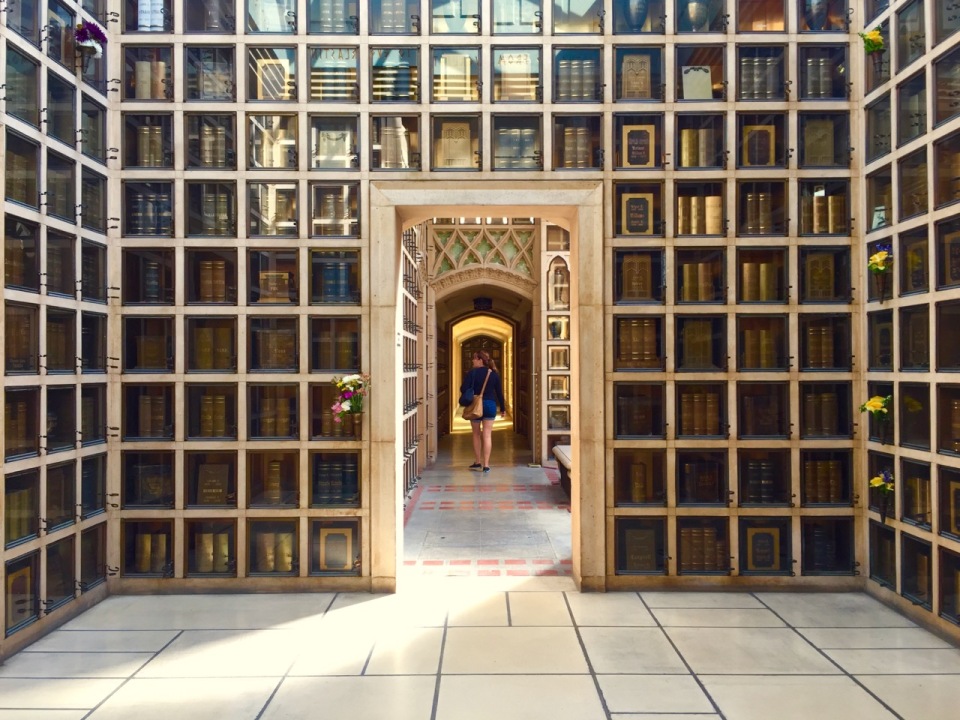Landmark Episode 1: The Library of the Dead
Manage episode 167400176 series 1262014

The Chapel of the Chimes in Oakland, California is a world-famous columbarium—a mausoleum for cremated remains. Photo: Graelyn Brashear
In Oakland, California’s Piedmont neighborhood, there’s a place where the dead are housed in urns resembling ornate books neatly stacked on shelves. The dearly departed are organized like there’s some dead Dewey Decimal System. Welcome to the Chapel of the Chimes, a columbarium built in 1909 that featured the world’s first electric crematorium.
It’s a piece of California history that bears the imprint of a master: Julia Morgan, famed architect of William Randolph Hearst’s San Simeon castle, was tapped to renovate the building in 1928, and it bears her signature Moorish-Gothic style.
But to really understand the history of the place, you have to go back further. At the time of its construction, cremation was still a relatively new practice in the U.S. For much of Western history, the idea of burning your loved one after death was abhorrent, sacrilegious—and illegal. But ideas started changing in the late 1800s, when doctors began warning of public health problems from overcrowded cemeteries too close to population centers. By the early 1900s, “cremation societies” were springing up to advocate for a more sanitary alternative to burial. Pay a little fee, join the club, and you, too, could enjoy a new way of death. The groups were especially popular in California, where some societies sprung for elaborate communal structures for the internment of their members’ ashes.
The Chapel of the Chimes is probably the most famous of them all, and it’s easy to see why. When the sun shines through the Chapel’s retractable ceiling windows, the places looks otherworldly. Glistening glass shelves of book-shaped urns reach from floor to ceiling. Small photos and mementos left by loved ones are occasionally seen on the shelves. A labyrinthine floor plan leads you in and out of rooms and courtyards, some tiny, some massive, all windowless but bathed in sunlight from above. Caged canaries are often heard singing throughout.
Many of Oakland’s notable past and present citizens lie within the Chapel of the Chimes, among them former Oakland Raiders owner Al Davis and musician John Lee Hooker. And it’s a place for everyone. Public concerts regularly fill the space with music. Art school students visit often to sketch the ornate architecture and many of the general public come through to sit with their love ones or to simply find some solitude.
Join us as we explore the Chapel in the first episode of Landmark, a new podcast tour of weird history and beautiful places around the San Francisco Bay Area. Your guides Lacy, Graelyn and Gabe are a trio of nerds who have trouble walking past historical plaques without stopping, and are here to share discoveries of people, places and things you might not be aware of. In this episode, we’ll walk you through the Chapel of the Chime’s echoing chambers and its strange history.
– Lacy Jane Roberts, Graelyn Brashear and Gabriel Tolliver
10 episodes




